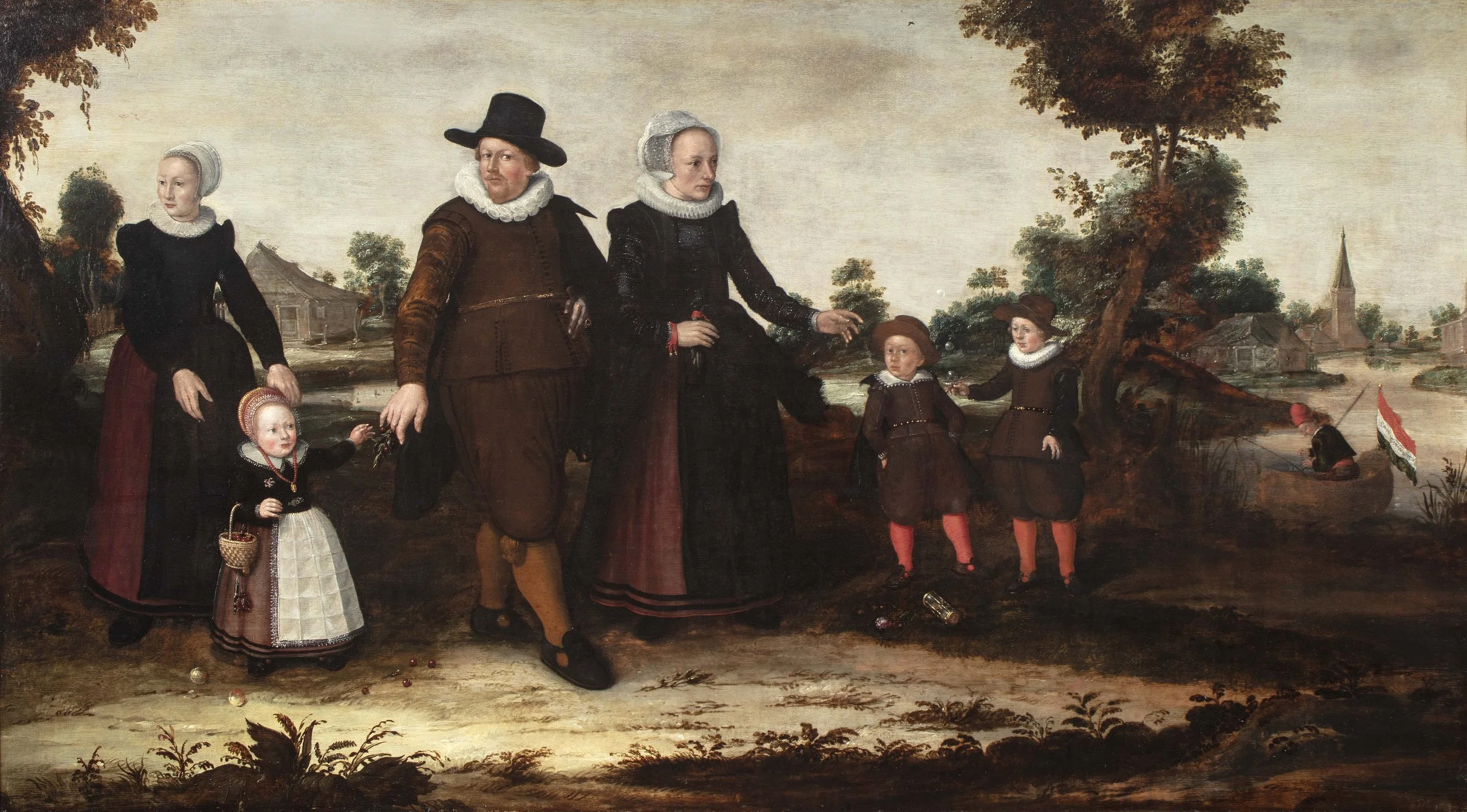FAMILY FIRST: JAN SIEWERTZ KOLM’S PORTRAIT OF WHAT MATTERED MOST
Jan Siewertz Kolm’s 1624 family portrait isn’t just a beautiful painting—it’s a heartfelt look into what really mattered to him and to most people in the Netherlands during the 1600s: family. This is the only known painting from Kolm, and that makes it feel all the more special. Out of everything he could have painted, he chose to capture his own family.
In the Dutch Republic of the 17th century, a well-run household was seen as a sign of good character and even good citizenship. People believed that if your home was in order, it meant society was in good shape too. Family life was at the center of everything. Families often had portraits made to show not just their wealth or clothing, but their values—love, stability, and togetherness. Kolm’s portrait of his wife Fijtge Lindemans, their children Anna, Siewert, and Hans, plus the family maid, whose identities are confirmed by drawings in Kolm’s journal in the Amsterdam City Archives, fits right into that tradition.
What makes this painting even more meaningful are the small details that carry deeper messages. The younger boy Siewert died at the age of 5. It must have been a devastating loss for this family. He is depicted here posthumously with symbols of his passing: an overturned hourglass, cast off rose and fallen petals on the ground before him. However, in an attempt to also bring joy, young Anna is shown holding cherries, a symbol of wishing for a sweet, full life. She is dressed impeccably, wearing a coral necklace, which people believed would protect children from illness or bad luck and is a mini version of her mother. These kinds of details were common in Dutch art and offered the artist (and/or the family) a chance to show their love, hopes and dreams for their children.
Kolm wasn’t alone in using art this way. Many artists in the Dutch Golden Age, like Frans Hals and Rembrandt, created family and group portraits that did more than just show what people looked like—they showed what people believed in. These paintings reminded viewers of the importance of family, community, and behaving well in society.
It’s also worth noting that Dutch homes were considered an important part of public life. The way your home looked and functioned said a lot about you. Women were expected to run the household, managing everything from meals to maids. Books at the time even gave them advice on how to do it well. Marriage was both romantic and practical—it often involved contracts and helped families grow their businesses and social ties.
In that sense, Kolm’s portrait is more than a family picture—it’s a visual record of how Dutch society lived and what they cared about. It is also a record of how Kolm lived and what he personally cared about. It captures a moment in time when family wasn’t just a personal matter; it was a public one too.
Although we only have this one painting from Kolm, it tells us so much. It shows his love for his family, his connection to the values of his time, and how art could express those deep beliefs. It is also a culmination of much of his other work in plays, writing, songs and illustrations – mostly of his family. Today, it stands as a touching reminder that while the world has changed a lot since the 1600s, the importance of family—caring for one another, building a life together—still resonates.
4 June 2025
